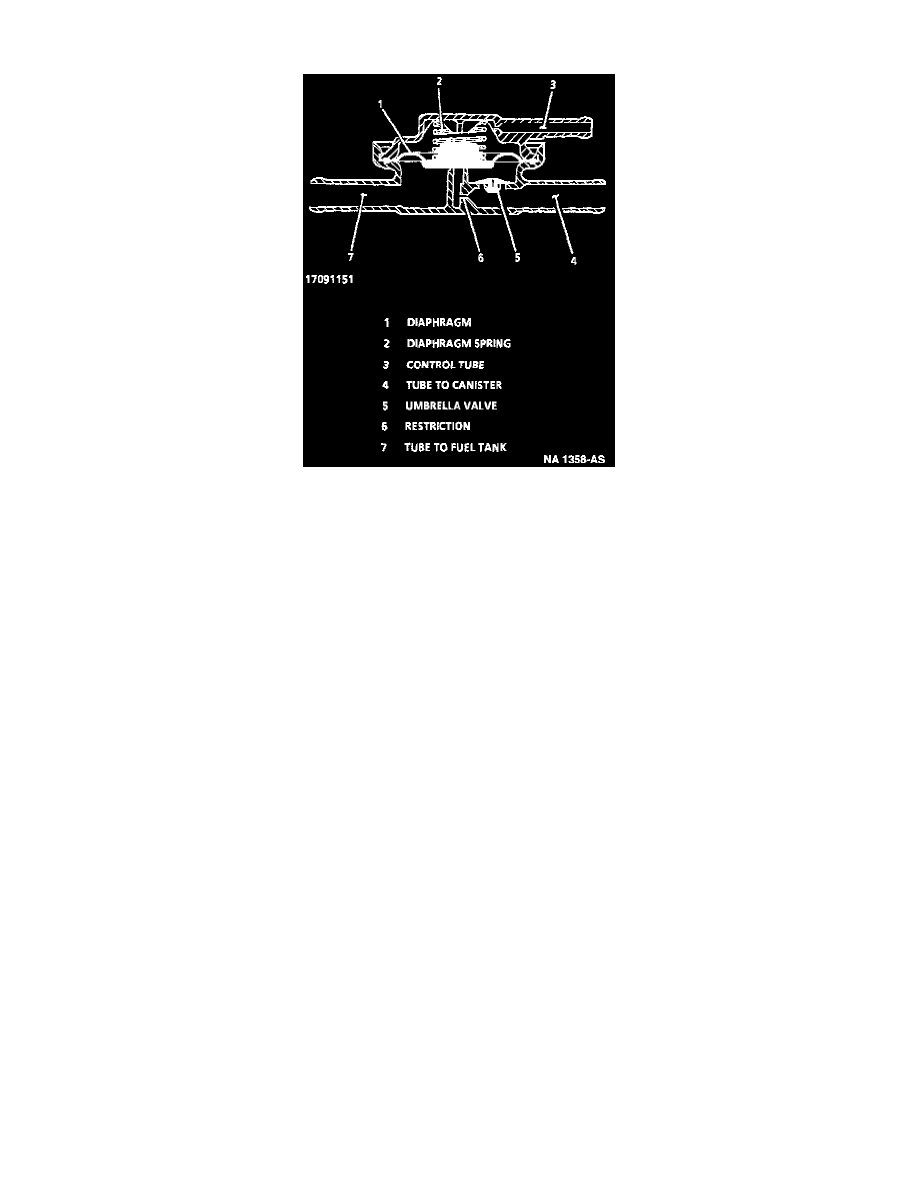Caprice V8-265 43L EVAP Pressure Control Valve (1996)

EVAP Pressure Control Valve: Description and Operation
EVAP Pressure Control Valve
DESCRIPTION
This system uses an in-line Evaporative Emissions (EVAP) pressure control valve as a pressure relief valve. When vapor pressure in the tank
exceeds approximately 5 kPa (0.7 psi) the diaphragm valve opens, allowing vapors to vent to the canister. A 1.14 mm (0.045 inch) orifice in the
passage leading to the canister tube causes pressure to drop slowly, preventing the valve from oscillating (buzzing). When the tank pressure drops
below 5 kPa (0.7 psi), the valve closes causing vapors to be held in the fuel tank.
RESULTS OF INCORRECT OPERATION
^
Poor idle, stalling and poor driveability can be caused by:
-
Inoperative purge solenoid valve.
-
Damaged canister.
-
Hoses split, cracked and, or not connected to the proper tubes.
^
Evidence of fuel loss or fuel vapor odor can be caused by:
-
Liquid fuel leaking from fuel lines.
-
Cracked or damaged canister.
-
Inoperative canister control valve.
-
Disconnected, misrouted, kinked, deteriorated or damaged vapor hoses, or control hoses.
If the solenoid valve is open. or is not receiving power, the canister can purge to the intake manifold at the incorrect time. This can allow extra fuel
during warm-up, which can cause rough or unstable idle.
